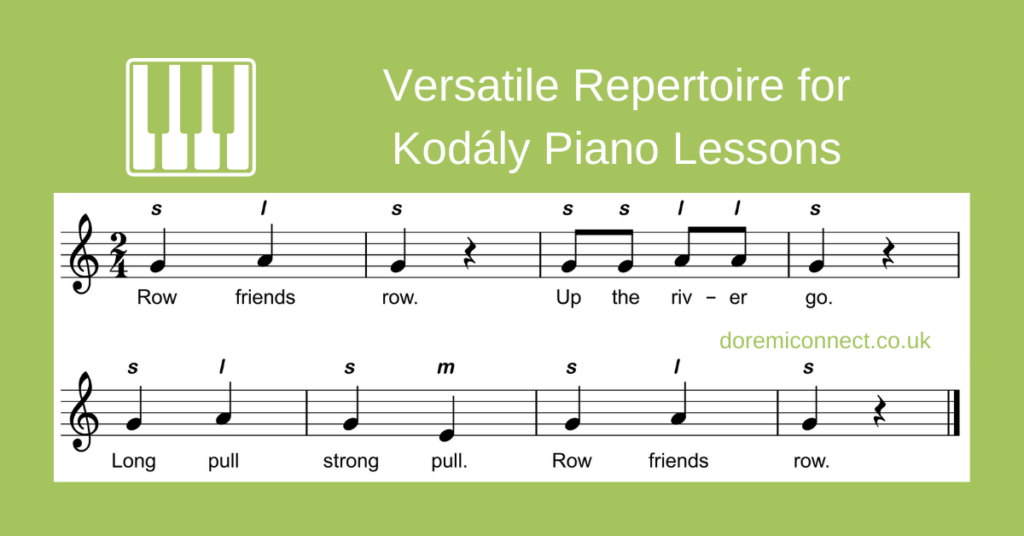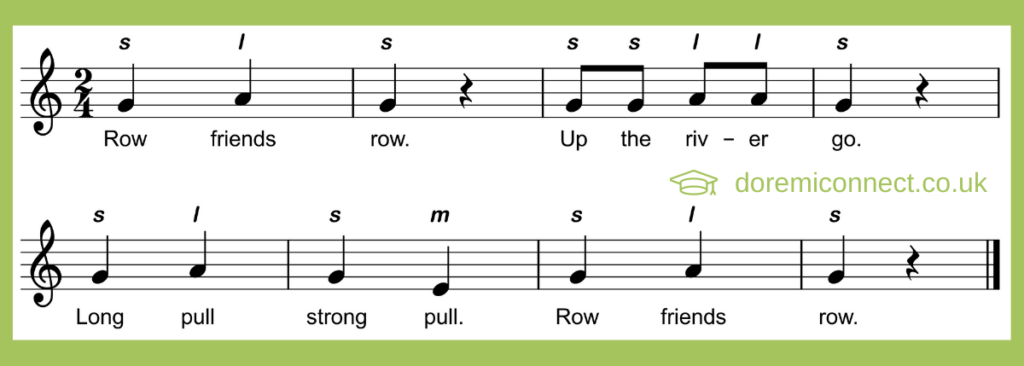Versatile Repertoire for Kodály Piano Teaching

I’ll admit I can be pretty ungrateful when it comes to gifts! Especially toys for my kids. Every January my house is full of flashy looking plastic things that don’t really do anything! The boys spend 30 seconds exploring each one, never to be touched again.
It’s such a waste of money and such a waste of plastic and I’ll admit it gets me down. I’d rather have nothing, truly!
But some of our toys are amazing. Which ones have value?
Toys that encourage and inspire creativity – and therefore endless enjoyment. I’m looking at you Lego!! The ones that have multiple uses so even when one activity is exhausted, they can be reused again for something else. Ones that grow with the kids so when their skills develop the toy can still meet their needs.
I feel the same way about songs!
Row Friends Row is one great example that I use in both my Kodály Piano Lessons and my Kodály Music Classes

Strong Pull
Ages before time signatures my students act out the rowing. The physical pull of the oars will map to the strong beat. We then follow “Helen’s microsteps” (need to trademark that) exploring heart icons, duple metre actions, bars, bar-lines and time signatures.
Presenting crotchet rests
Once they are really confident feeling the beat we can draw out heart icons to represent those beats and it’s so easy then to explore the rhythm. We can use small toys or lego bricks to work out which beat has one sound, which has two and… low and behold… some of the beats have NO SOUNDS! The perfect song for the discovery and presentation of the crotchet rest – a beat with no sound.
Something different?
Singing something different AT THE SAME TIME? It’s hard and they know it, so it feels amazing. When they are pulling their strong oars they say “strong, strong, strong” and I sing the song. It’s the simplest form of ostinato and a great introduction to part work.
What song is this?
Humming the melody of the song for them to guess is one of our favourite games and so beneficial to their pitch development. Some songs are too similar, but this one is fab.
Want More?
Related Articles
Destination: Middle C. A Kodály approach to Letter Names and Clefs… part two
Alongside the work on introducing do re mi on the white keys, we can introduce the musical alphabet which takes us down a path of learning landmark notes, tonics, clefs, the grand staff and our destination… middle C
Preparing Pitch: How to prepare pitch and practical ideas
This blog will explore what it means to prepare our students aurally, physically and visually with practical suggestions for activities
7 Ways to Encourage Arm Movement in Kodály Piano Lessons
When teaching piano beginners we need to remember that the skills we want them to master in the future need seeding from the start.
When Will They Do Grade 1? No Worries for Kodály Piano Teachers
“When will they do their Grade 1?” I think we all recognise this question and we all dread it. But what happens when you’re a Kodály Piano Teacher? You might be surprised! I certainly was.
Memorising Kodály Music & Piano Lesson Plans
Do you memorise your lesson plans for piano lessons or music classes?
So many of us feel we need to memorise our lesson plans. Here are my reflections on my own journey, hang ups and misconceptions about memorisation.
Responses
Comments are closed.
Great tutorial